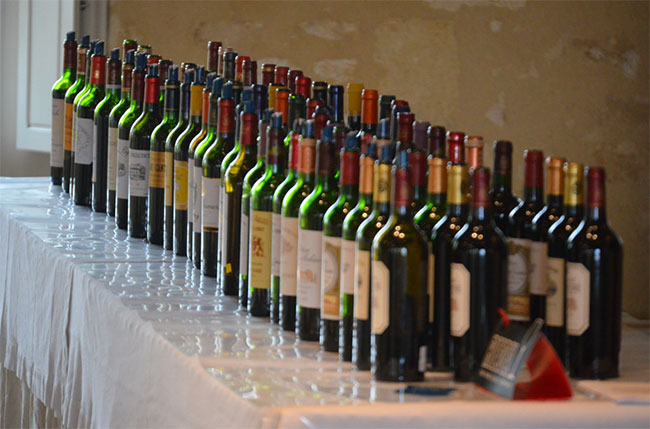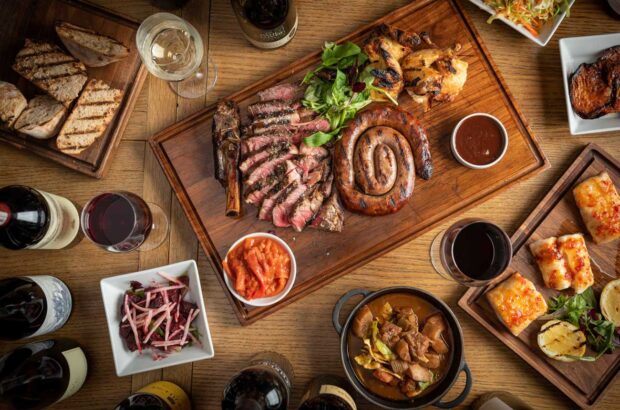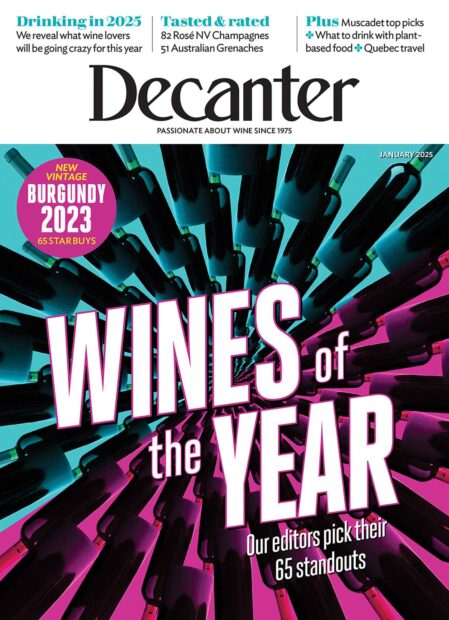The small corner of Bordeaux occupied by Listrac-Médoc deserves more recognition, argues Jane Anson, who also reports on some exciting developments there.
Land value in Listrac-Médoc
Land prices in Bordeaux‘s Listrac-Médoc area are high. A hectare of vines will set you back on average €75,000, rising to perhaps €200,000 for the best cru bourgeois vineyard.
That’s not too crazy compared to the strip of vines a few miles further east that runs along the Gironde Estuary, where Pauillac reaches an average of €2m per hectare or Margaux €1m.
But, Listrac-Médoc is still on a par with St-Emilion and is four times more expensive than Castillon Côtes de Bordeaux.
Big names
And there are some big names here. Bruno Borie of Château Ducru Beaucaillou owns Château Fourcas Borie and Château Ducluzeau, while Benjamin de Rothschild – reportedly the wealthiest of this extremely wealthy family – has Château Clarke and the Momméja brothers of luxury group Hermès own Château Fourcas Hosten.
Yet, wines from Listrac-Médoc are not in the same price league as some of Bordeaux’s biggest estates.
Struggling for recognition
And still, Listrac-Médoc still struggles to receive serious recognition. Why is this?
- Maybe because around half of the appellation’s 65 winemakers bottle under the co-operative cellars, leaving just 31 independent growers.
- Maybe because it’s the smallest appellation on the peninsula, with just 567 hectares in production and 4% of Médoc’s vineyard surface. Margaux is twice the size.
- Maybe it’s because the array of terroirs means Listrac is labelled the ‘laboratory of Médoc’, according to Château C28larke’s winemaker Yann Buchwalter, yielding less consistency.
- Or maybe it’s the predominance of the Merlot grape that simply never gets the respect on Bordeaux’s Left Bank that it does over in St-Emilion or Pomerol; even if its planting here is matched to soils with increasing precision, limited only to the places where it will thrive.
Frustration
It can be frustrating for the winemakers. Buyers and wine lovers complain about the prices in the better known Médoc appellations, but it’s unusual for that to translate into more footfall for Listrac and Moulis, the two neighbouring communes that lie on the D1 road that cuts straight through the Médoc peninsula from central Bordeaux.
It passes through plenty of vineyard land, but lacks the majesty of the D2 Route des Châteaux that winds along the river. This one is set way back from the Estuary, closer to the pine forest that provides a 35km buffer between AOC land and the Atlantic ocean.
Biodiversity
The limestone plateau that cuts through Listrac is part of the oldest geological layer in the Médoc and sits at the highest point of the peninsula, at 43 metres above sea level.
‘Biodiversity is part of the natural order of things in Listrac,’ Sophie Thierry of Fourcas Hosten tells me as we head out into the vines.
This may be the first time that a château has specially brought a pair of wellingtons for me in case I wasn’t wearing adequate footwear. I’m not, so I am already charmed before we trace the wall of trees that marks the furthest western edge of the Médoc vineyard. At this time of year the forest is likely to hide cèpe hunters, eyes down, searching out the region’s prized mushrooms.
‘We have pine, beech, cedar and oak trees here,’ says Thierry, ‘and this is one of the best spots in Bordeaux for cèpes. But other parts of the appellation see wide open prairies of wildflowers and grasses’.
Optimism
Fourcas Hosten is the focus of a renewed sense of optimism in Listrac. When the Hermès brothers arrived in 2006, they were fresh from missing out of buying Château Pichon Comtesse de Lalande in Pauillac, and there was plenty of satisfaction locally in the idea that Listrac would be a good alternative (there was a similar feeling, if you can remember, when the Wertheimer brothers missed out on Latour and bought the then-underperforming Château Rauzan Ségla).
Today, run by Renaud Momméja, with Eric Boissenot as consultant, the investments begun in 2006 have started to pay dividends, with the wine taking on a more serious and structured feel, but still with the immediacy of the best Listracs, fleshed out with (certainly in the 2009 that we tasted that day) dark fruits, flint and woodsmoke.
Listrac-Médoc white wine reborn
In 2014, Momméja also became one of just five owners to reclaim an often forgotten part of this appellation’s history. In the 19th century, Listrac was known for its excellent white wines, described in local winemaking bible Feret as ‘delicate, fragrant and highly sought after’.
Château Clarke’s white dates right back to 1890, and is today joined by Châteaux Saransot-Dupré, Fonréaud, Fourcas Dupré and now Fourcas Hosten.
Total numbers are still small – white grapes cover just 12 hectares in total (up from 10 hectares in 2012 but not close to the heyday in 1929, when there were equal quantities of red and white produced here – although even that meant just 25 hectares of each).
Our tasting of the 2014s was the first comparative line-up that even the winemakers had done. It showed the wines falling into two distinct styles of clean Sauvignon Blanc led minerality (Fourcas Hosten, Fourcas Dupré and Merle Blanc from Château Clarke – my favourite example, and also one of the least expensive) and a rounder exotic style with higher Sémillon (Château Fonréaud and Saransot Dupré).
The first camp had clear Pessac Léognan similarities, the second closer to the dry whites from Sauternes.
Currently bottled under AOC Bordeaux Blanc, there are discussions over whether to petition for an AOC Listrac Blanc – although I suspect they’ll be waiting a long time before convincing anyone to introduce an official white appellation in the Médoc.
As excellent as most were, they need greater numbers and a stronger sense of family to merit the addition.
More Anson on Thursday columns:

Anson on Thursday: A game changer for Burgundy winemaking?

Anson: Bordeaux 2015 behind the scenes – part two

Anson on Thursday: Bordeaux 2015 behind the scenes – part one

Anson on Thursday: Just don’t call them Beaujolais crus







